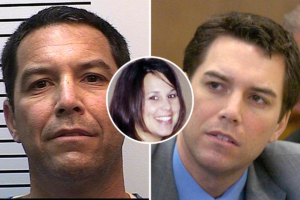How safe is the United States?
Threats to our safety come in many different forms, from natural disasters to violent crime.
Preliminary evidence from the National Safety Council has estimated that 20,900 people lost their lives in preventable traffic accidents in the U.S. in the first six months of 2024.
Meanwhile, as of October 9, 13,148 people have died as a result of gun-based violence in 2024 so far, according to the Gun Violence Archive. However, some cities are more dangerous than others.
To investigate these disparities, personal loan comparison tool, WalletHub, compared more than 180 cities from across the U.S. against 41 key safety metrics to determine the 10 safest and least safe states in the country.
These metrics included measures of home and community safety, like mass shootings, murders, assaults, thefts, drug poisoning, and traffic fatalities; natural disaster risk, including earthquakes, hurricanes and wildfire risks; and financial security, including underemployment rates, poverty, insurance, and fraud.
Underemployment differs from unemployment as it describes when a person is employed, but is not using their skills to their full potential.
According to this analysis, the 10 most dangerous cities in the U.S. are as follows:
- Memphis, Tennessee
- Detroit, Michigan
- Fort Lauderdale, Florida
- Baton Rouge, Louisiana
- New Orleans, Louisiana
- Baltimore, Maryland
- Cleveland, Ohio
- Oakland, California
- Philadelphia, Pennsylvania
- San Bernardino, California
You can see the locations of these cities in the map below:
But what is driving these differences?
“Economic disparities, rising drug abuse, and social disintegration tend to lead to higher crime rates among the cities at the very bottom of the rankings,” Chip Lupo, writer and analyst for WalletHub, told Newsweek.
However, while polls have shown that safety is a major concern for the majority of Americans, it is a subject that is often misunderstood.
“Attention has largely focused on the intersection of immigration and crime and the misunderstood—and, often, deliberately misrepresented—connection between the two,” Jorge X. Camacho, policy director and clinical lecturer in law at Yale Law School, said in a statement.
“In an age where immigrant communities are both falsely and farcically being accused of eating pets and stealing ‘Black jobs,’ the conversation has primarily focused on dog-whistled allegations that rising immigration contributes to crime and social disorder.
“These claims persist despite the fact that immigrant communities tend to have higher rates of employment, lower rates of divorce and family disruption, and higher rates of educational enrollment, all of which are factors that tend strongly toward reduced crime and greater social order.”
These claims may also distract from solving these issues and disparities. “Improving safety nationwide is a complex task,” Lupo said.
“A good start would be for local policymakers to advocate for increased investment in underserved communities through job creation, upgrades in infrastructure, and improving education, all of which can help level disparities and support the community’s at-risk population.
“In addition, reforming policing practices with an emphasis on transparency and strengthening community relations can also go a long way [if] implemented properly.”
Do you have a tip on a health story that Newsweek should be covering? Let us know via science@newsweek.com.
The post Map Reveals America’s Most Dangerous Cities appeared first on Entertainment Mind.






